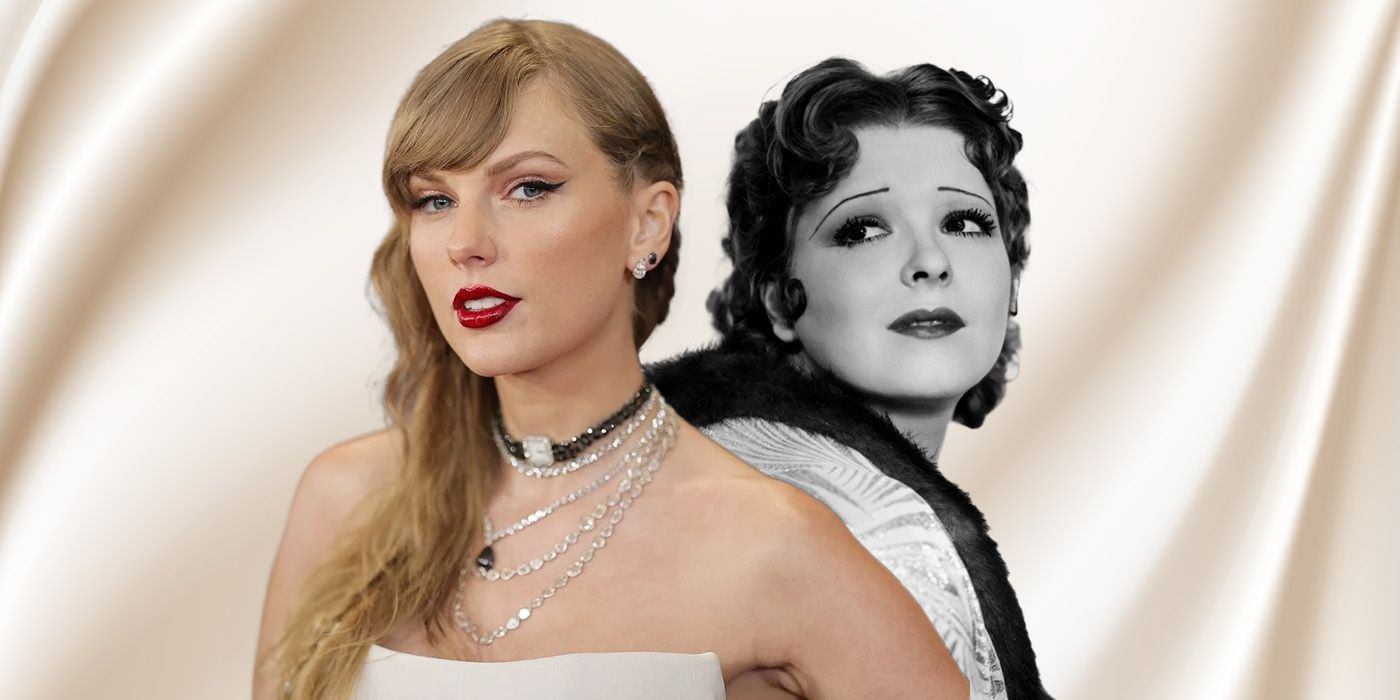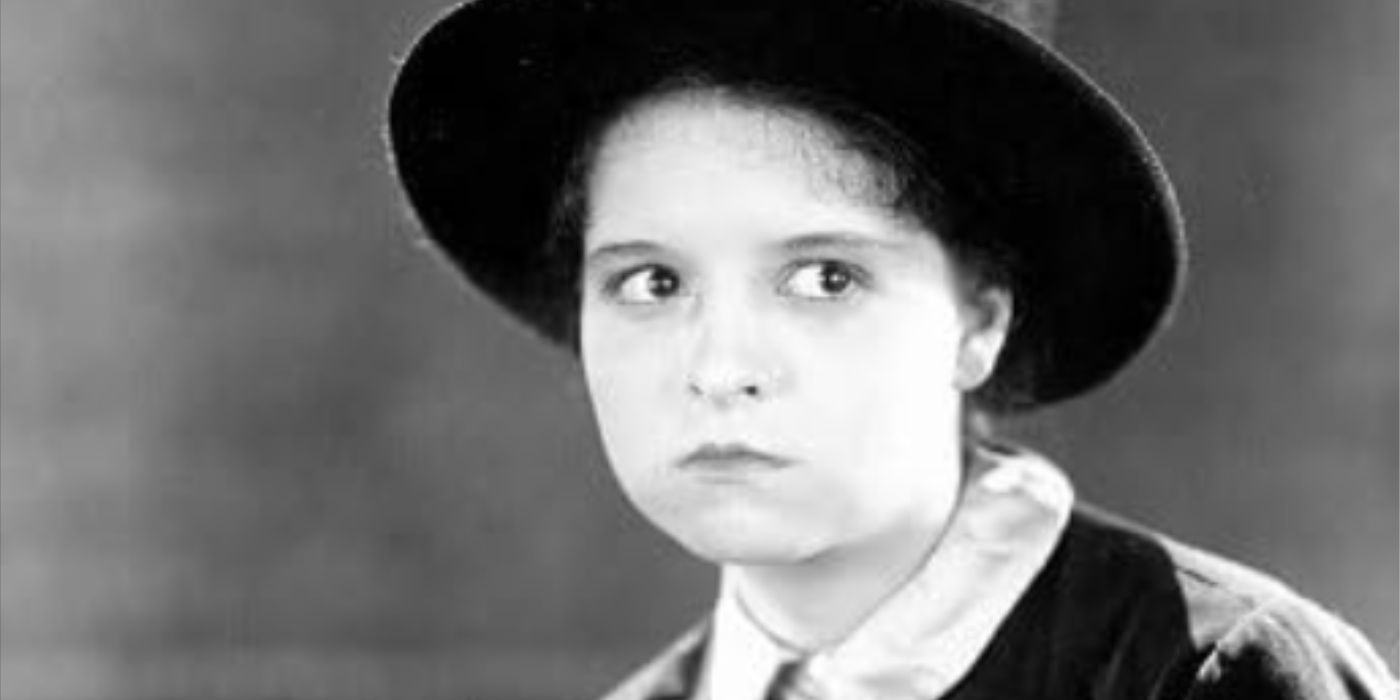The Big Picture
- The final song on Taylor Swift’s album,
The Tortured Poets Department
, is named “Clara Bow,” a reference to the classic film star who appeared in both silent films and talkies during the 1920s. - Clara Bow was named the original ‘”It girl” of the silent film era due to her charm, allure, and fashion sense.
- Despite her Hollywood success, Bow retired in 1930 due to media scrutiny and personal pressures, a parallel to Taylor Swift, who has been vocal in her lyrics about the pressures of life in the public eye.
Onstage at the 2024 Grammys, Taylor Swift announced that her 11th studio album, The Tortured Poets Department, was on its way during her acceptance speech. After months of frantically theorizing what the pop star’s newest album would sound like, fans can finally rest easy because Tortured Poets is finally here — and unsurprisingly, it’s an immersive amalgamation of songs about heartbreak, forbidden love, and fame. The latter is best represented in the album’s final track, “Clara Bow,” a direct reference to a stellar actress from the silent film era. Clara Bow‘s career onscreen rose to prominence in the 1920s amid cinema’s transition to the talkies. A popular figure in and out of films, she became the first person to be called an ‘It girl’, after starring in her most well-known project, It, back in 1927. With a filmography that spans 57 films, Bow had a notorious yet short-lived run in Hollywood. More than 50 years since her passing, Swift’s decision to bring the late actress to the limelight became an invitation to take a closer look at her stardom and her legacy.
Clara Bow Landed Her First Role After Winning a Magazine Competition
Born and raised in a low-income household in Brooklyn, Bow’s childhood was far from picture perfect. From being mocked in school for wearing ragged dresses to having her mother being diagnosed with psychosis (one of her episodes almost killed her own daughter), the actress endured some rough patches before becoming a well-known name. Despite wanting to become an athletics teacher during her teen years, she ended up shifting gears into film after winning Motion Picture Magazine’s acting competition in 1921. This recognition gave her the opportunity to star in her first onscreen endeavor in 1922’s Beyond the Rainbow, a small part that was cut off from the final edit. She, in fact, would go from studio to studio in the hopes of getting another acting job, which paid off when she landed her second role in 1922’s Down to the Sea Ships. Her second film garnered a positive reception, helping her to land one project after another for years. With a constant flow of work, Bow left New York and moved to Los Angeles, signing a multi-picture deal with a major studio at the time called Preferred Pictures.
Clara Bow Became a Staple of the Silent Film Era, Both On and Off the Screen
Like many actors during this period, she would be on various sets at a time, starring in 15 films in 1925 alone. Yet, despite the success of her previous roles in titles like The Plastic Age, Bow only garnered the ‘It girl’ fame after playing a retail worker with a strong sense of fashion in It (yes, the term was actually coined because of the film’s name). Elinor Glynn, the film’s screenwriter and author of the book that inspired it, defined ‘It’ as “you win all men if you are a woman—and all women if you are a man.” Bow won male and female audiences alike with her onscreen charm and signature look. Her flawless curls, thin eyebrows, and doll-like features became an instant hit, embodying the style associated with the Roaring 20s.
Nevertheless, the question remains, why was her career short-lived? The reason is one that Swift can certainly relate to — superstardom comes with a lot of pressure, and Bow felt that weight at the height of her success. Although in 1929 she got over 45,000 fan letters per month and her trendy looks were often recreated by women who watched her work, the actress received a lot of scrutiny from the media for her love affairs off-screen and her unapologetic behavior (often breaking Hollywood social codes). With so much tabloid gossip about her life and mental health struggles related to her traumatic childhood, Bow decided to pull the plug on her acting endeavors in 1930. She did a candid interview with Motion Picture (the same magazine that led her to pursue film back in the day) about her negative experience being a Hollywood star:
“Your life isn’t your own for a minute. You can’t love the man you want to, or get married, or have children, without the whole world prying into your affairs, asking impertinent questions. If you don’t tell them every intimate detail of your life, they think you’re disagreeable and high-hat.”
In a time when various actors were struggling to transition from silent films to the talkies, the actress wasn’t daunted by the concept of sound (she starred in over 11 talkies toward the latter end of her onscreen trajectory). After a two-year pause in her career, she returned to the screen for her final two roles in the sound films Call Her Savage and Hoopla. She then retired and went on to live in a ranch in Nevada with her then husband, Rex Bell. Nowadays, her name is featured in the Hollywood Walk of Fame, as a memento of her cinematic legacy.

This Gina Rodriguez & Lakeith Stanfield Netflix Movie Was Inspired by a Taylor Swift Song
And the favor is returned.
Taylor Swift Connects Her Career Path to the Film Star in Her Song ‘Clara Bow’
Clara Bow might’ve been born several decades before Taylor Swift, but parallels between these two can be easily traced. Both came from small towns and pursued their dreams at the age of 16 and endured a wave of criticism at the height of their popularity. In Swift’s album closer, she mentions that someone looks like Bow as a way to show that as time goes by, new artists arise who are then compared to their shining predecessors. Given the old Hollywood actress’ influence and ‘It girl’ fame in the ’20s, Bow became a benchmark for the stars who emerged after her. Swift also mentions Stevie Nicks in the song, who was a trailblazer in 1975 after becoming the frontwoman of Fleetwood Mac. At the end of the track, the singer references herself as the next artist to fall under this cycle, alluding to the fact that other musicians will be compared to her in the future. Despite the song being a reflection of fame and artists being replaceable throughout generations, it is no secret that it has left many new fans of the country-turned-pop icon intrigued by Clara Bow, and how she is still a relevant figure in this day and age.
Taylor Swift: The Eras Tour is currently available to stream on Disney+ in the U.S.










